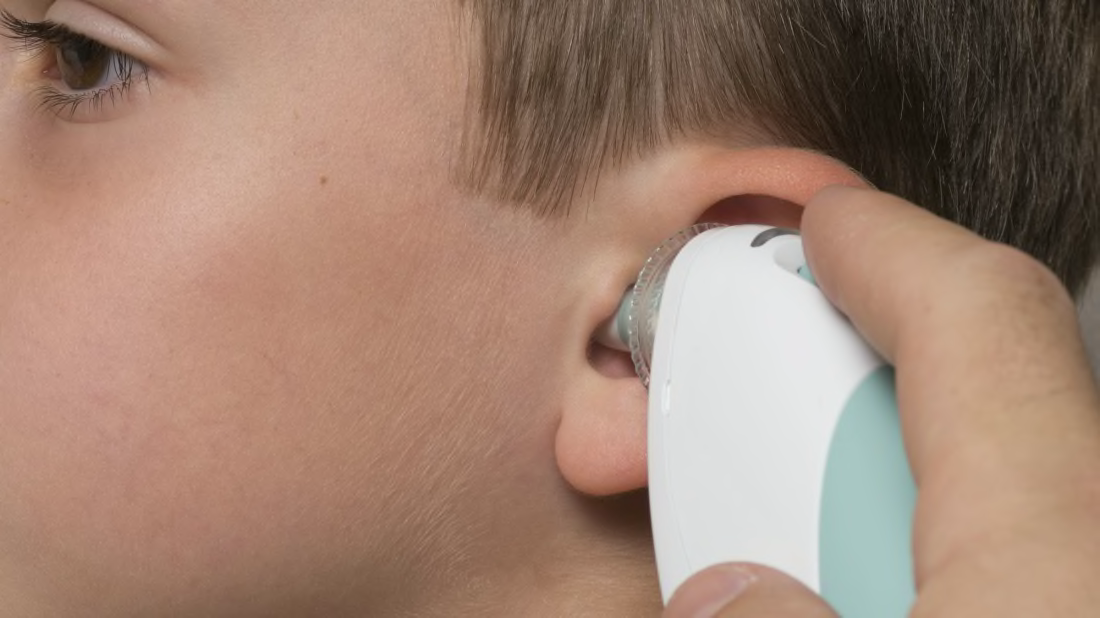2019-nCoV What You Need To Know 'bout Latest Outbrake!?
Here’s What You Need to Know About the New Coronavirus

This morning, the Centers for Disease Control and Prevention (CDC) confirmed the second case of the recently discovered coronavirus in the U.S. Find out what it is, where it is, how to avoid it, and all the other need-to-know information about the illness below.
What is the new coronavirus?
Coronaviruses are a group of viruses named for the crown-shaped spikes that cover their surfaces (corona is the Latin word for crown). According to the CDC, human coronaviruses can cause upper-respiratory tract illnesses, including the common cold, and can sometimes lead to more severe lower-respiratory tract issues like pneumonia or bronchitis.
Because this latest coronavirus, 2019-nCoV, is so new, health officials are currently trying to figure out how it works and how to treat it. It’s not the first time a potent new coronavirus has caused an international outbreak: SARS-CoV originated in Asia and spread to more than two dozen countries in 2003, and MERS-CoV first infected people in Saudi Arabia before spreading across the globe in 2012.
Where is the coronavirus outbreak happening?
The majority of cases are in China, which counts more than 800 confirmed diagnoses. Most are in Wuhan, a city in China’s Hubei province where 2019-nCoV was first detected last month. Additional cases have been reported in South Korea, Japan, Singapore, Hong Kong, Macao, Taiwan, Thailand, and Vietnam.
The CDC has confirmed two U.S. cases—a man in his thirties outside Seattle, and a 60-year-old woman in Chicago—both of whom had recently returned from trips to Wuhan. A CDC official said another 63 potential cases are being investigated in 22 states, and airports in New York, Chicago, Los Angeles, Atlanta, and San Francisco are conducting health screenings on passengers arriving from China.
Chinese officials have shut down transportation to and from Wuhan. Tourist spots like Beijing’s Forbidden City, Shanghai Disneyland, and a portion of the Great Wall are also closed temporarily.
What are the symptoms of the new coronavirus?
Symptoms are similar to those caused by a cold or the flu, including fever, dry cough, and breathing difficulty. The New York Times reported that as of Friday morning, 25 people in China have died from the virus, and most of them were older men with preexisting health conditions like cirrhosis, diabetes, and Parkinson’s disease.
How does the new coronavirus spread?
Because most of the early cases of 2019-nCoV were traced back to a seafood and meat market in Wuhan, health officials think the virus originally spread from infected animals to humans, but it’s now being transmitted from person to person.
Though scientists are still studying exactly how that happens, the leading theory is that it travels in tiny droplets of fluid from the respiratory tract when a person coughs or sneezes.
How do you avoid the new coronavirus?
The CDC is warning everyone to avoid any nonessential trips to Wuhan, and to avoid animals or sick people if you’re traveling elsewhere in China. If you’ve been to China in the last two weeks and experience any of the symptoms listed above, you should seek medical attention immediately—and you should call the doctor’s office or emergency room beforehand to let them know you’re coming.
Otherwise, simply stick to the precautions you’d normally take when trying to stay healthy: Wash your hands often with soap and water, cover your nose and mouth when coughing or sneezing, stay away from sick people, and thoroughly cook any meat or eggs before eating them.
Should you be worried about the new coronavirus?
The global health community is taking 2019-nCoV seriously in order to curb the outbreak as quickly as possible, but you shouldn’t panic. The CDC maintains that it’s a low-risk situation in the U.S., and public health officials are echoing that message.
“We don’t want the American public to be worried about this, because their risk is low,” Anthony Fauci, director of the National Institute of Allergy and Infectious Diseases, told USA Today.
Coronavirus: How worried should we be?
A virus - previously unknown to science - is causing severe lung disease in China and has also been detected in other countries.
Fifty-six people are known to have died from the virus, which appeared in the Chinese city of Wuhan in December.
There are already more than 2,000 confirmed cases, and experts expect the number will keep rising.
A new virus arriving on the scene, leaving patients with pneumonia, is always a worry and health officials around the world are on high alert.
Can this outbreak be contained or is this something far more dangerous?
- Coronavirus: Your questions answered
- Wuhan: The London-sized city where the virus began
- China coronavirus: What we know so far
What is this virus?
Officials in China have confirmed the cases are caused by a coronavirus.
These are a broad family of viruses, but only six (the new one would make it seven) are known to infect people.
Severe acute respiratory syndrome (Sars), which is caused by a coronavirus, killed 774 of the 8,098 people infected in an outbreak that started in China in 2002.
"There is a strong memory of Sars, that's where a lot of fear comes from, but we're a lot more prepared to deal with those types of diseases," says Dr Josie Golding, from the Wellcome Trust.
How severe are the symptoms?
It seems to start with a fever, followed by a dry cough and then, after a week, leads to shortness of breath and some patients needing hospital treatment.
Around one-in-four cases are thought to be severe.
The coronavirus family itself can cause symptoms ranging from a mild cold all the way through to death.
"When we see a new coronavirus, we want to know how severe are the symptoms. This is more than cold-like symptoms and that is a concern but it is not as severe as Sars," says Prof Mark Woolhouse, from the University of Edinburgh.
The World Health Organization (WHO) says it is an emergency in China, but decided not to declare an international public health emergency - as it did with swine flu and Ebola.
How deadly is it?
Fifty-six people are known to have died from the virus - but while the ratio of deaths to known cases appears low, the figures are unreliable.
But the infection seems to take a while to kill, so more of those patients may yet die.
And it is unclear how many unreported cases there are.
Where has it come from?
New viruses are detected all the time.
They jump from one species, where they went unnoticed, into humans.
"If we think about outbreaks in the past, if it is a new coronavirus, it will have come from an animal reservoir," says Prof Jonathan Ball, a virologist at the University of Nottingham.
Sars started off in bats and then infected the civet cat, which in turn passed it on to humans.
And Middle East respiratory syndrome (Mers), which has killed 858 out of the 2,494 recorded cases since it emerged in 2012, regularly makes the jump from the dromedary camel.
Which animal?
Once the animal reservoir (where the virus normally camps out) is detected, then the problem becomes much easier to deal with.
The coronavirus cases have been linked to the South China Seafood Wholesale Market, in Wuhan.
But while some sea-going mammals can carry coronaviruses (such as the Beluga whale), the market also has live wild animals, including chickens, bats, rabbits, snakes, which are more likely to be the source.
Researchers say the new virus is closely related to one found in Chinese horseshoe bats.
Why China?
Prof Woolhouse says it is because of the size and density of the population and close contact with animals harbouring viruses.
"No-one is surprised the next outbreak is in China or that part of the world," he says.
How easily does it spread between people?
At the beginning of the outbreak, the Chinese authorities said the virus was not spreading between people - but now, such cases have been identified.
Scientists have now revealed each infected person is passing the virus on to between 1.4 and 2.5 people.
This figure is called the virus' basic reproduction number - anything higher than 1 means it's self-sustaining.
We now know this is not a virus that will burn out on its own and disappear.
Only the decisions being made in China - including shutting down cities - can stop it spreading.
While those figures are early estimates, they put coronavirus in roughly the same league as Sars.
When are people infectious?
Chinese scientists have confirmed people are infectious even before their symptoms appear.
The time between infection and symptoms - known as the incubation period - lasts between one and 14 days.
Sars and Ebola are contagious only when symptoms appear. Such outbreaks are relatively easy to stop: identify and isolate people who are sick and monitor anyone they came into contact with.
Flu, however, is the most famous example of a virus that you spread before you even know you're ill.
Prof Wendy Barclay from the department of infectious disease at Imperial College London said it was common for lung infectious to spread without symptoms.
The virus is "carried into the air during normal breathing and talking by the infected person," she explained.
"It would not be too surprising if the new coronavirus also does this."
We are not at the stage where people are saying this could be a global pandemic like swine flu.
But the problems of stopping such "symptomless spreaders" will make the job of the Chinese authorities much harder.
What is not known is how infectious people are during the incubation period.
How fast is it spreading?
It might appear as though cases have soared, from 40 to more than 2,000 in just over a week. But this is misleading.
Many of these seeming new cases will have come to light as a result of China improving its ability to find infected people.
There is actually very little information on the "growth rate" of the outbreak.
But experts say the number of people becoming sick is likely to be far higher than the reported figures.
A report last week by the MRC Centre for Global Infectious Disease Analysis at Imperial College London said: "It is likely that the Wuhan outbreak of a novel coronavirus has caused substantially more cases of moderate or severe respiratory illness than currently reported."
And over the weekend, researchers at Lancaster University estimated the number of cases suggesting 11,000 have been infected this year. If true, that would be more than Sars.
Could the virus mutate?
Yes, you would expect viruses to mutate and evolve all the time. But what this means is harder to tell.
China's National Health Commission has warned the coronavirus's transmission ability is getting stronger, but they were unclear on the risks posed by mutations of the virus.
This is something scientists will be watching closely.
How can the virus be stopped?
We now know the virus will not stop on its own; only the actions of the Chinese authorities can bring this epidemic to an end.
There is also no vaccine to give people immunity to the virus.
The only option is to prevent people who have become infected from spreading the virus to others.
That means:
- Limiting people's movement
- Encouraging hand-washing
- Treating patients in isolation with healthcare workers wearing protective gear
A massive feat of detective work will also be needed to identify people whom patients have come into contact with to see if they have the virus.
How have Chinese authorities responded so far?
China has done something unprecedented anywhere in the world - by effectively putting Wuhan into quarantine.
Travel restrictions have also been imposed on a dozen other cities with 36 million people affected.
Some mass gatherings have been banned and tourists sites, including part of the Great Wall, have been closed.
And a ban on the sale of wildlife, a possible source of the infection, has been imposed.
Wuhan - the centre of the outbreak - is building a two new hospitals with beds for a total of 2,300 people.
How is the world responding?
Most Asian countries have stepped up screenings of travellers from Wuhan and the WHO has warned hospitals worldwide a wider outbreak is possible.
Singapore and Hong Kong have been screening air passengers from Wuhan and authorities in the US and the UK have announced similar measures.
However, questions remain about the effectiveness of such measures.
If it takes up to two weeks for symptoms to appear, then someone could easily be halfway round the world and have passed through any screening checks before starting to feel ill.
How worried are the experts?
Dr Golding says: "At the moment, until we have more information, it's really hard to know how worried we should be.
"Until we have confirmation of the source, that's always going to make us uneasy."
Prof Ball says: "We should be worried about any virus that explores humans for the first time, because it's overcome the first major barrier.
"Once inside a [human] cell and replicating, it can start to generate mutations that could allow it to spread more efficiently and become more dangerous.
"You don't want to give the virus the opportunity."
Are there any vaccines or treatments?
No.
However, the work to develop them is already under way. It is hoped that research into developing a vaccine for Mers, which is also a coronavirus, will make this an easier job.
And hospitals are testing anti-viral drugs to see if they have an impact.
Ten (10) Best U.S. Cities for Reducing Stress

Looking to reduce your stress level? You might want to consider moving to Anaheim, California. Homeowner website House Method analyzed data from America’s largest 100 cities in order to determine the best—and worst—cities for managing your stress level.
The company looked at the same five factors across all 100 cities: commute time, mental health counselors per capita, the percentage of people who exercise regularly, walkability (specifically: to a park), and the number of yoga instructors and classes. Once all the data was tallied, Anaheim, California ended up in the top spot with an overall score of 38.5.
"The city has beautiful weather, lots of sunshine, and Disneyland. How could you be stressed when Mickey lives right down the road?," House Method’s senior editor and researcher David Cusick wrote of the results. "While Anaheim didn’t have the best score for commute time, it did rank number one for the city with the most mental health counselors per capita and has a very high percentage of people who like to exercise frequently."
California did well overall; four of the survey’s top 10 cities were located in The Golden State: Oakland came in second, Irvine came in fourth, and San Francisco came in fifth (despite its high housing costs). Seattle and Spokane, Washington—which came in eighth and tenth, respectively—tipped the scales in the west coast’s favor. Here are the 10 best cities for reducing stress:
- Anaheim, CA
- Oakland, CA
- Jersey City, NJ
- Irvine, CA
- San Francisco, CA
- Minneapolis, MN
- Madison, WI
- Seattle, WA
- Aurora, CO
- Spokane, WA
On the other end of the rankings were America’s worst cities for reducing stress, with Laredo, Texas taking the title as the very worst. “Laredo ranked last for the amount of mental health counselors per capita, percentage of people who exercise, and the amount of yoga instructors/classes,” Cusick wrote. “Filling out the bottom five cities are Bakersfield, California (96); Indianapolis, Indiana (97); San Antonio, Texas (98); and Jacksonville, Florida (99).”
For the full list of city rankings, visit House Method.
Human Body Temperatures Are Dropping, and Science Might Know Why

In 1868, German physician Carl Reinhold August Wunderlich started to popularize what’s become the most recognizable number in all of medicine: 98.6°F or 37°C, which is thought to be the normal average human body temperature. Though his methods later came under scrutiny—Wunderlich stuck an enormous thermometer under the armpits of patients for 20 minutes, a less-than-accurate technique—this baseline has helped physicians identify fevers as well as abnormally low body temperatures, along with corresponding illnesses or diseases.
More than 150 years later, 98.6° may no longer be the standard. Humans seem to be getting cooler. Researchers at Stanford University School of Medicine, in a paper published in the journal eLife, compared three large datasets from different time periods: American Civil War records, a national health survey from the 1970s, and a Stanford database from 2007-2017. By comparing recorded body temperatures, the researchers founds that men are now averaging a temperature .58°C less than what's long been considered normal, while women are .32°C lower. On average, each has decreased roughly .03°C every decade since the 1860s.
What drove us to chill out? Scientists have a few theories. A number of advances in human comfort have been ushered in since the 1800s, including better hygiene and readily available food, which may have slowed our metabolic rate (temperature is an indication of that rate). Chronic inflammation, which also raises body temperature, has decreased with the advent of vaccines, antibiotics, and better healthcare. The researchers propose that, on average, our bodies are healthier and slightly less warm.
After all, the average life expectancy in Wunderlich’s era was just 38 years.
[h/t The Independent]






Comments
Post a Comment